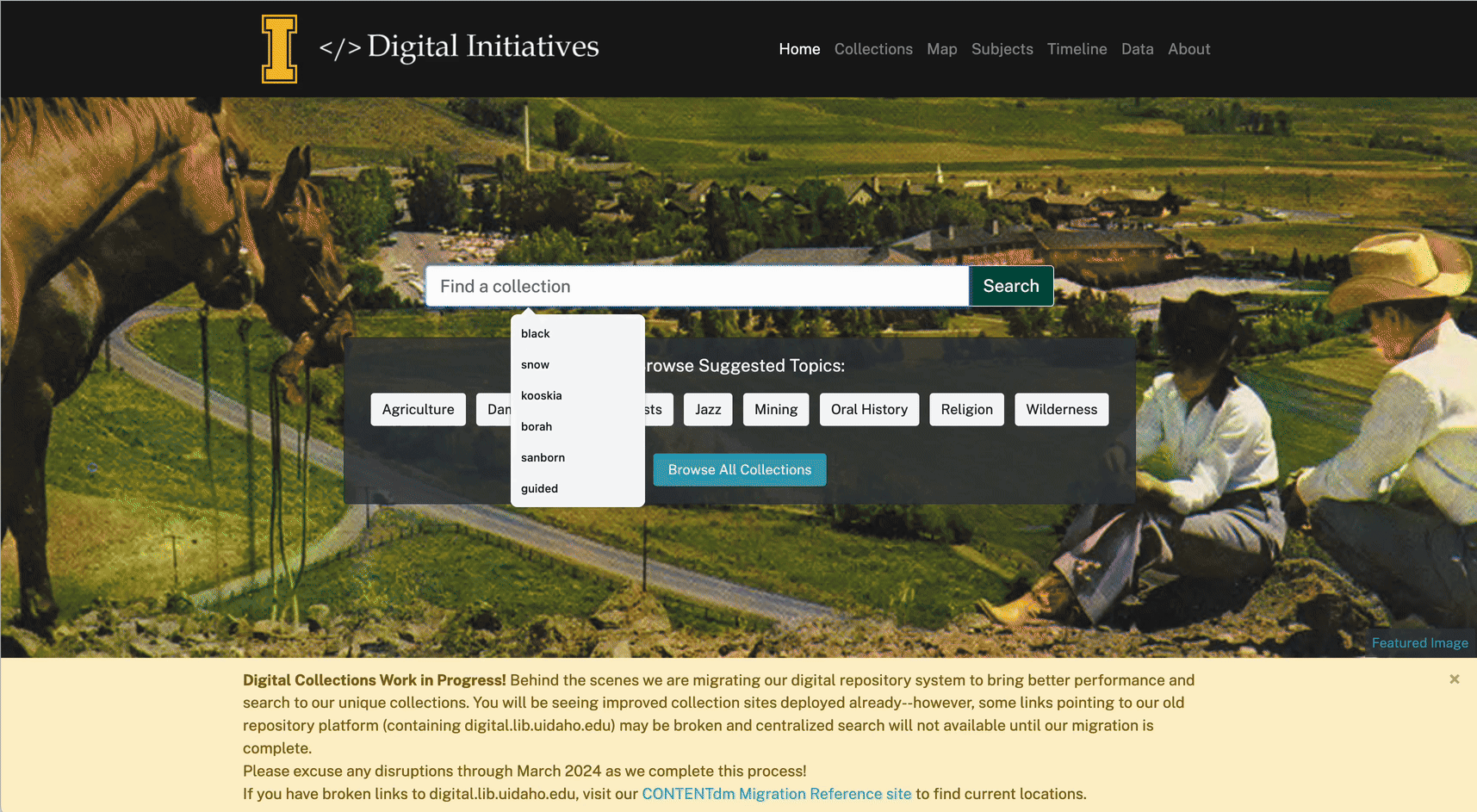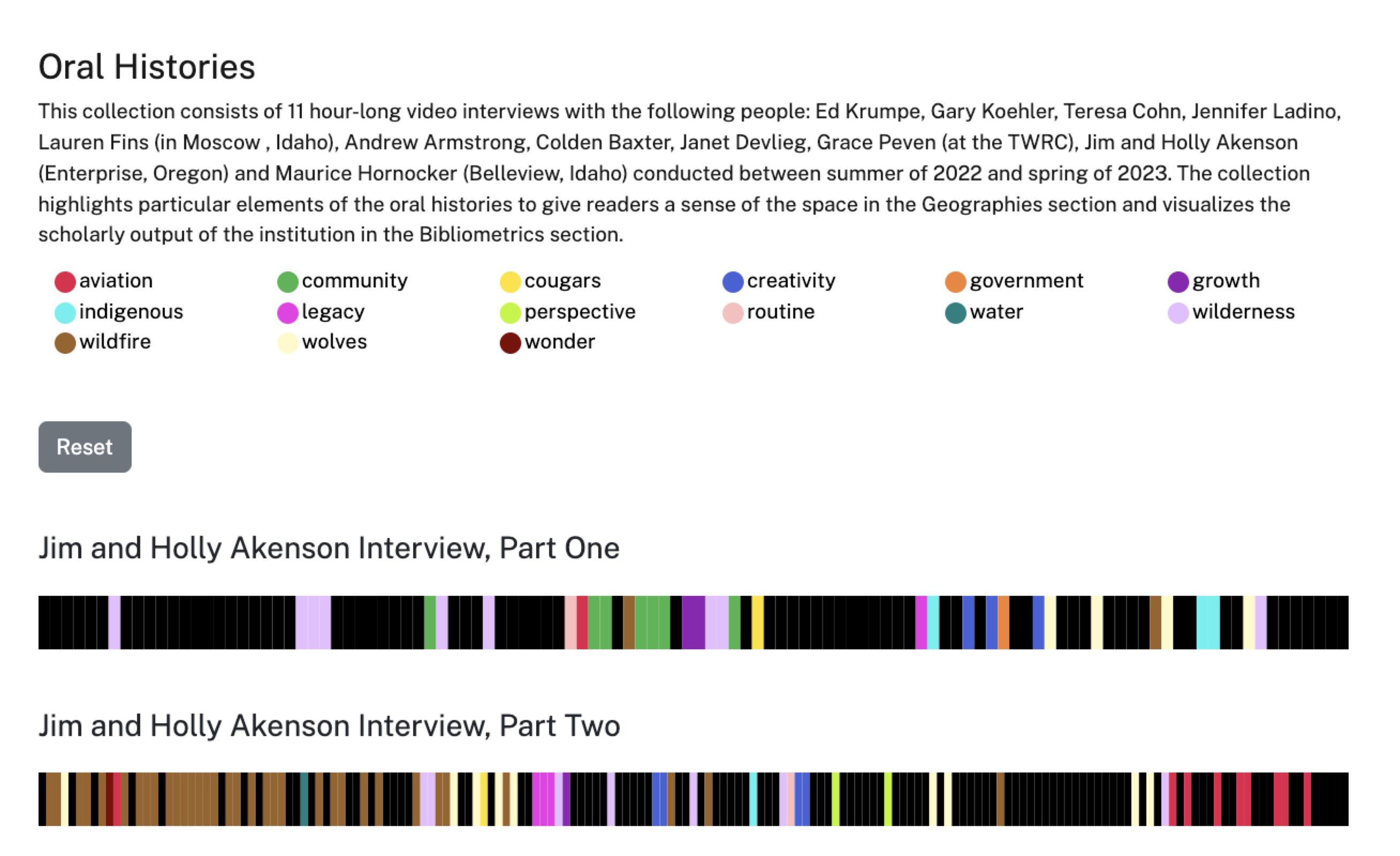Background
Hello, my name is Andrew Weymouth and I have worked with the University of Idaho Library as the Digital Initiatives Librarian in the Center for Digital Inquiry and Learning (CDIL) department since the fall of 2023. My work generally consists of creating and maintaining our digital collections, working with CDIL fellows, helping to rethink processes and introducing new digital scholarship tools to the department.
✺

The University of Idaho’s Digital Scholarship and Open Strategies (DSOS) department was established in 2008 to digitize the newly acquired International Jazz Collection and has since expanded to over 130 digital collections.[1] These collections are built with CollectionBuilder, an “open source framework for creating digital collections and exhibit websites that are driven by metadata and modern static web technology”. A companion framework named Oral History as Data (OHD) was developed afterwards to visualize encoded transcriptions and allow researchers to explore oral history recordings by keywords and tags. In this presentation, “tagging” refers to a custom set of subject designations that can be tailored by the transcriber depending on the recording’s content and themes.

Our physical workspace at the library is the Center for Digital Inquiry and Learning (CDIL), where our Digital Labs Manager, Digital Project Manager and I support the labor of a small group of student workers and fellowship recipients, generally around 2-5 a semester. Both the CollectionBuilder and OHD frameworks have been designed to be completely open source, only requiring someone with access to Google Sheets, a text editor, a GitHub account and minimal software installation to create, maintain and export digital collections.
✺
The incentive for this project arose from realizing a number of oral history recordings were either untranscribed, partially transcribed or lacking in accuracy following a data migration of our digital collections away from ContentDM in the winter of 2023. Because of the volume of transcripts that needed updating, it was worthwhile to rethink workflows for overall efficiency and accuracy of this project.
This case study details my experience over the last six months developing the tools independently and collaborating with one undergraduate fellowship recipient and one graduate student working as transcribers, incorporating their feedback and streamlining processes. Additionally, this work supports an improved and expanded version of the OHD framework and documentation that is currently in progress.